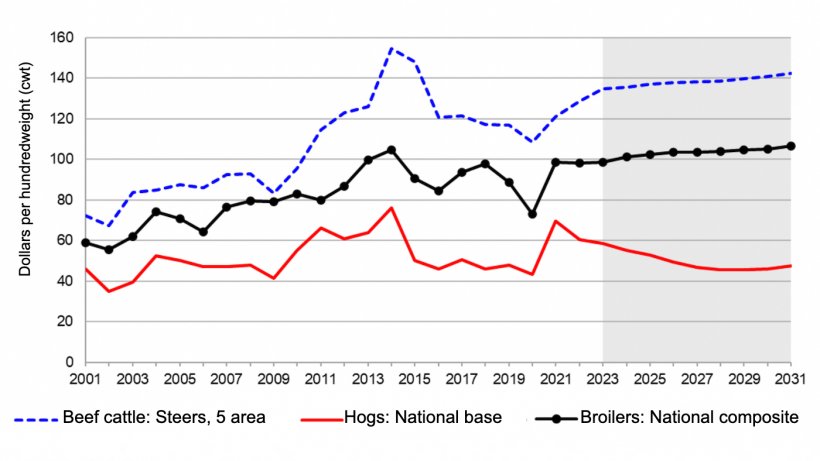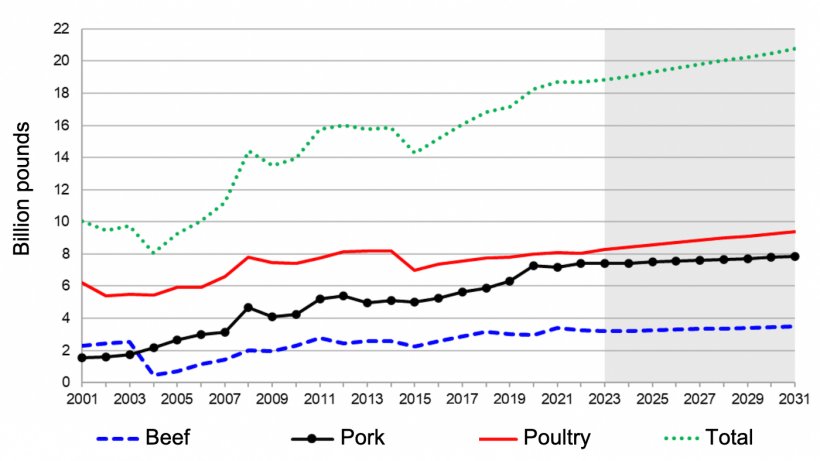Pork production
The U.S. pork sector in the projection period to 2031 is characterized by steady production growth deriving largely from innovations adopted by the industry in hog production and processing technologies.

Pork production increases 2.8% in the first year of the projection period to 28.4 billion pounds. After the first year, pork production increases at a pace that averages about 1% per year through 2031, ending at 30.6 billion pounds.

Hog prices
Despite some volatility early in the period, progressively increasing supplies of pork are expected to pressure hog prices lower through 2029, before reversing and trending higher through the end of the projection period.
National base lean prices for live-equivalent hogs are expected to average just under $50 per hundredweight over the projection period. The hog-feed price ratio is expected to decline steadily from 2023 to 2029, as increasing production pressures hog prices lower, offsetting initially lower, then stable corn prices.

Exports
The annual percent change in U.S. pork exports averages less than 1% over the projection period, lower than growth rates for beef and poultry. The presence of African swine fever in China and elsewhere is expected to continue to be a potential source of volatility in international animal protein markets. The United States is expected to maintain its position as the second-largest exporter of pork behind the European Union but remain well ahead of other major pork exporters Brazil and Canada.

February 17, 2022/ USDA/ United States.
https://www.ers.usda.gov





